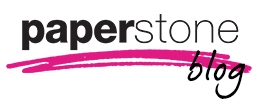Why bother planning?

We’ve all heard of the multi-million-pound business that started on the ‘back of a fag packet’. But it’s the work that happens after the initial creative spark that defines a successful business. We might all roll our eyes and heave a sigh at the thought of planning, but the truth is, whatever your size, you must plan to remain successful.
Even maverick entrepreneurs build businesses through careful planning. Some of the largest brands we know today would never have made it big without it. Take Henry Ford, he spent years refining the design of the motor car, striping it back to the bare minimum; planning and focusing on how to make the motor car more affordable. Even after its launch, he kept planning, his company pioneered the manufacturing production line and the Model T Ford’s price kept dropping. It started on the market in 1908 at $825 and by 1916 it was just $360.
Where do you start?
At Paperstone HQ, we hold regular planning sessions throughout the year, but at this time of year, we really try to focus. It’s now our thoughts turn to the next year and what we want to achieve.
We think having the right tools around you can make all the difference between a mediocre planning meeting and a buzzing creative melting pot of ideas and concepts. Here are our top three planning essentials to get you going.
1. Diaries, calendars & wall planners
Perhaps the most obvious planning tools, these much-loved little helpers come in many forms – day, week, month and year. Some of us would be lost without our electronic reminders. But many of us still like to put it down in our own paper diary.
When it comes to planning we love the mark-it year planner. It displays information for all to see. You can change, remove and add notes when you need to. And it’s visible all the time – unlike electronic calendars and planners.
2. Interactive boards
Throwing ideas into the mix and marking them up for all to see is essential to the planning process.
The humble whiteboard with its wipe-clean face gives everyone the opportunity to fine-tune ideas. The old school flipchart still has a place in a meeting room. But the newest member of the board family, the glass board, is taking over. These guys are always clean and clear, so you’re not distracted by looking at Bob’s risqué doodle from two years ago that quite won’t rub off. You can brand them, print from them and they look cool.
3. Sticky notes
Where would we be without the Post-it note? Which, incidentally, was invented by accident. A 3M employee was trying to develop a super-strong glue, but instead created the opposite, a glue that would stick and unstick (whoops). He didn’t lose his job and one of his colleagues saw its potential.
For project planning, these little notes are invaluable. Post-it note planning is simple but incredibly effective – and fun. Put the whole team together in a room, give everyone a pen and some sticky notes and start putting them onto a timeline. Some will stay, some will be binned, some will be refined. But at the end of the process, you have a project plan that everyone’s on board with because they helped create it.
If you’ve got all the kit, but are still struggling with business planning, grab some biscuits, a big jug of coffee and shove your team into a meeting room.
Happy planning!




Recent Comments